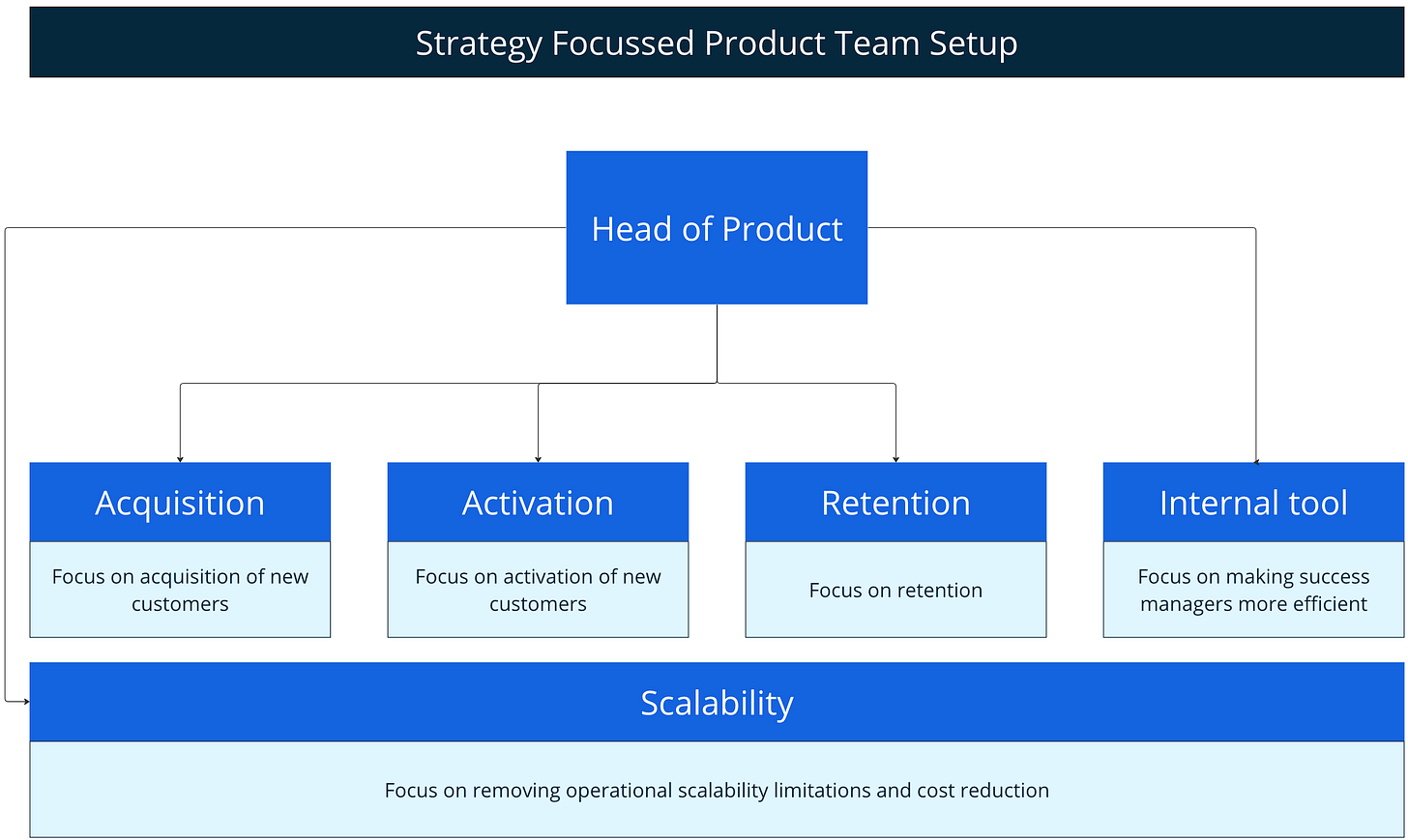An effective product team setup focuses on strategy and value streams.
Feeling the pain of silos and inefficiencies in your product team setup? Uncover how a shift to strategy-centric teams can improve your operations and boost your team's efficiency
Organising product teams is a task that lies at the heart of every successful startup. The traditional approach is to organise teams around features or components. However, my experience shows that this model can run into several problems that negatively affect the overall efficiency and effectiveness of the team.
Here's what typically happens:
Silos: Teams working on different components independently often creates silos, each team becomes a standalone unit, working separately from the rest. This leads to potential miscommunication and misunderstandings, hindering the much-needed collaboration and inter-team synergy.
Lack of Ownership: With the focus on specific features or components, teams may lose sight of the bigger picture, missing out on the sense of ownership over the complete product. This can adversely affect motivation and make it challenging to hold teams accountable for the product's overall success.
Inefficient Resource Allocation: Resource allocation becomes complex in a feature-based setup. Some features may get more resources than necessary, while others may lack the essential resources. The result? Inefficient use of time, personnel, and budget.
Slow Decision Making: A feature-based team structure often slows down decision-making processes. With each team focused on a specific component, reaching a consensus on product-wide decisions requires more time due to the involvement of multiple teams.
Inability to Respond Quickly to Changes: In today's fast-paced world, the ability to adapt swiftly is key. Feature-based teams might struggle to pivot based on new information or market changes since the teams are not organised around broader strategic objectives.
Quality and Integration Issues: When teams exclusively focus on their components, integration can become a challenge. This often leads to inconsistencies in the final product, negatively impacting the overall user experience.
In addition, setting goals and defining missions for such teams often feels forced, almost artificial. It usually involves translating and breaking down overarching product goals (which are customer-centric) into component or feature-centric objectives. This can amplify the problems, reinforcing the lack of ownership.
So, is there a better way to structure your teams?
Absolutely, and it involves a simple shift of focus: organise your product teams around strategies rather than features or components.
Here’s why this makes sense:
Accountability and Transparency: With strategy-aligned goals, teams have a clear roadmap. It's easier to establish KPIs and objectives that resonate with the team, fostering a sense of responsibility and ownership.
Collaborative Efficiency: Strategy-centric teams work towards common objectives. Everyone understands their role, boosting cooperation and collaboration.
Informed Decision-Making: A clear strategy provides a framework for decision-making, helping teams make choices that contribute positively to the broader goals.
Self-sufficiency and Autonomy: Such teams, if staffed correctly, can execute faster and with less dependency on other teams.
Agile Adaptability: Strategy-centric teams are inherently more agile. They can swiftly shift priorities to meet changing strategic objectives.
Effective Communication: Clear strategic objectives provide a common language for discussing the company's goals, improving communication within and between teams.
Engaged and Motivated Teams: When team members understand the strategy and how their work contributes to it, they're likely to feel more engaged and motivated.
So, have you considered this shift to strategy-centric teams? Have you experienced it, or are you considering it? I'd love to hear your thoughts and experiences on this. Share them below, let's learn from each other.




